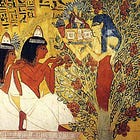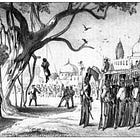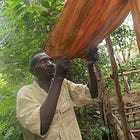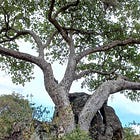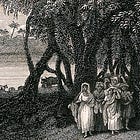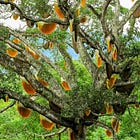Discover (or Rediscover) Planet Ficus
13 Tales of Wonder, Myth and Ecology
Since launching Planet Ficus three months ago, I’ve published 13 editions exploring fig trees from all angles — evolution, ecology, myth, religion, culture and art.
This special edition brings them all together. Whether you’re a new subscriber or have been with me from the start, I hope this collection deepens your appreciation of the extraordinary world of fig trees — our very own Planet Ficus.
Grouped below by theme, the stories reveal why fig trees are keystones of life, history and imagination. Please dive in, and don’t forget to like or share any pieces that resonate with you.
First, the big picture… If you’re new to fig trees start here. This one lays the foundations for Planet Ficus by introducing what sets fig trees apart as ecological and cultural giants.
A look at why so many cultures say that supernatural beings dwell among the roots of strangler figs — some benign, others utterly menacing.
Two stories of sacred fig trees in India — covering their value to wildlife and the dark history of how they were used in colonial times.
Once worn exclusively by royalty, Uganda’s fig tree barkcloth has been suppressed by religion, colonialism and war, but has bounced back. In Kenya, researchers found that the same species of fig tree turns partially to stone, locking away carbon effectively forever.
My story about a gigantic fig tree that Alexander the Great possibly encountered will introduce you to the largest of all Ficus species — the mighty banyan. This story also provided the prompt for one of the world’s largest art projects.
They are demonized as brutal killers but strangler figs can be lifesavers — of both plants and people. Two stories from Vanuatu and India explain.
Each month, I bring you a roundup of new stories from around the world that reveal just how extraordinary fig trees are — not just biologically, but culturally, spiritually and artistically. Catch up here:
What’s next?
In the coming months, Planet Ficus will bring you even more astonishing stories — I have a long list of things I want to write. If you’ve found value in my work here, your support — whether through sharing the newsletter, commenting or becoming a paid subscriber — will help keep this project growing.
The support of readers encourages and enables me to dedicate more time to research and storytelling, and to bring the astounding legacy of fig trees to more readers around the world.



